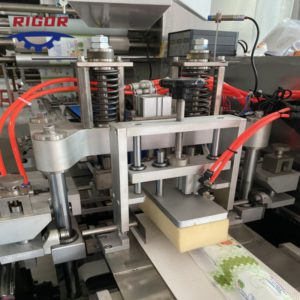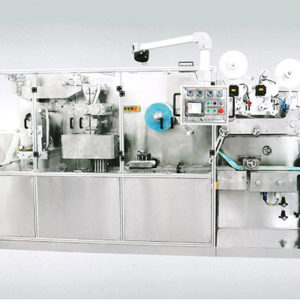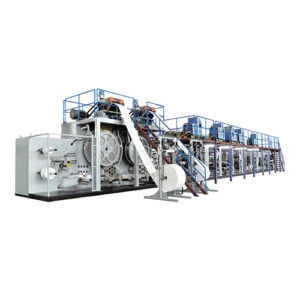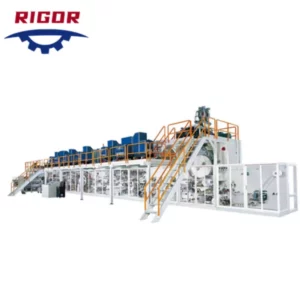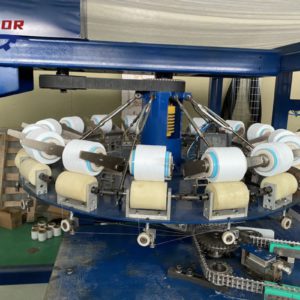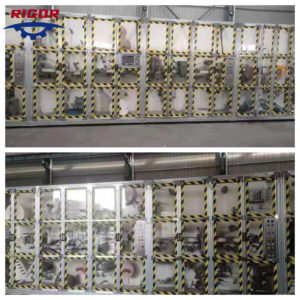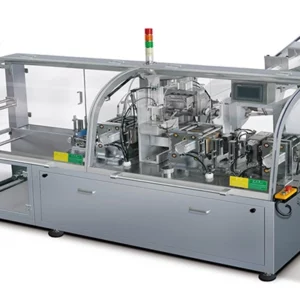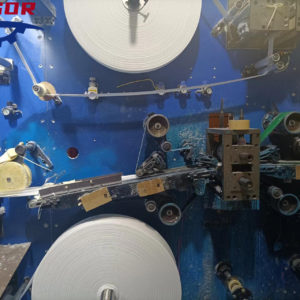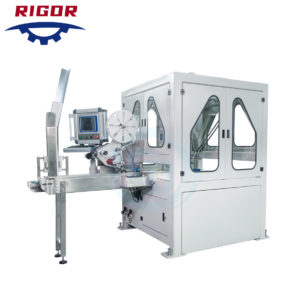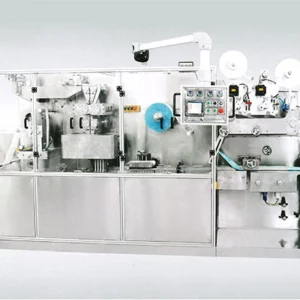The sanitary napkin making process encompasses a series of intricate steps that contribute to the production of high-quality and reliable feminine hygiene products. From the selection of materials to the final packaging, manufacturers prioritize comfort, absorbency, and leakage protection.
The Components and Materials Of Sanitary Napkin

Sanitary napkins are composed of several layers, each serving a specific purpose in providing comfort, absorbency, and leakage protection. The key components of a typical sanitary napkin include:
a) Top Sheet: The top layer is designed to be soft, non-irritating, and moisture-wicking. It allows for quick absorption and keeps the surface dry, enhancing comfort during use.
b) Absorbent Core: The absorbent core is responsible for trapping and retaining menstrual fluid. It is typically made of wood pulp, super-absorbent polymers, and fluff pulp, which have excellent absorbent properties.
c) Back Sheet: The back sheet is a waterproof layer that prevents leakage and ensures that the user remains dry and comfortable throughout the day.
d) Adhesive Strips: Adhesive strips are used to secure the sanitary napkin in place, adhering to the wearer’s underwear.
In addition to these primary components, manufacturers may incorporate side barriers or wings for additional protection against leakage.
The Sanitary Napkin Manufacturing Process
The sanitary napkin manufacturing process involves several stages, each contributing to the final product’s quality and effectiveness. These stages include:
a) Design and Prototyping: The process begins with designing the sanitary napkin, taking into consideration the desired shape, size, absorbency, and comfort. Prototypes are created and tested to ensure optimal performance.
b) Material Preparation: The materials used in sanitary napkins, such as the absorbent core, top sheet, back sheet, and adhesive strips, are prepared and cut into appropriate sizes. Automated machines are often employed to ensure precision and efficiency.
c) Assembly: The various components are assembled using automated machinery. The top sheet, absorbent core, and back sheet are layered and joined together. Adhesive strips and side barriers or wings are added as required.
d) Cutting and Shaping: Once assembled, the continuous sheet of layered materials is cut into individual sanitary napkins of the desired shape and size. Sophisticated cutting machines ensure accuracy and consistency.
e) Folding and Packaging: The cut sanitary napkins are folded and packaged, typically in individual wrappers or in bulk packaging. This process ensures hygiene and convenience for distribution and use.
f) Quality Control: Throughout the manufacturing process, strict quality control measures are implemented. This includes regular inspections, testing for absorbency, leakage prevention, adhesive strength, and overall product integrity.
Innovations in Sanitary Napkin Manufacturing
The sanitary napkin manufacturing process has witnessed significant innovations over time, aimed at enhancing comfort, absorbency, and sustainability. Some notable advancements include:
a) Ultra-Thin Designs: Manufacturers have developed ultra-thin sanitary napkins that provide enhanced comfort and discretion without compromising on absorbency and leakage protection. These thinner designs offer a more natural and comfortable feel during use.
b) Sustainable Materials: There has been a growing emphasis on incorporating sustainable materials in sanitary napkins. This includes the use of biodegradable and compostable materials for the absorbent core, top sheet, and packaging, reducing environmental impact.
c) Advanced Absorbent Technology: Innovations in absorbent core technology have led to the development of high-performance materials, such as super-absorbent polymers, that can hold larger volumes of menstrual fluid and distribute it evenly for improved comfort and leakage protection.
d) Odor Control: Manufacturers have introduced odor-controlling technologies that help neutralize or minimize menstrual odor, providing a more pleasant and confident experience for users.
Ensuring Access and Education
While the sanitary napkin manufacturing process is crucial, it is equally important to focus on ensuring access to affordable and quality feminine hygiene products. Additionally, promoting menstrual health education and awareness plays a vital role in breaking taboos, reducing stigma, and empowering women to make informed choices about their menstrual hygiene needs.
